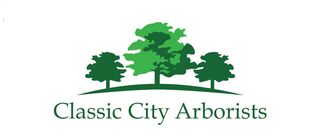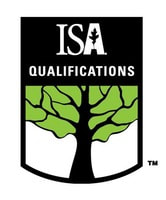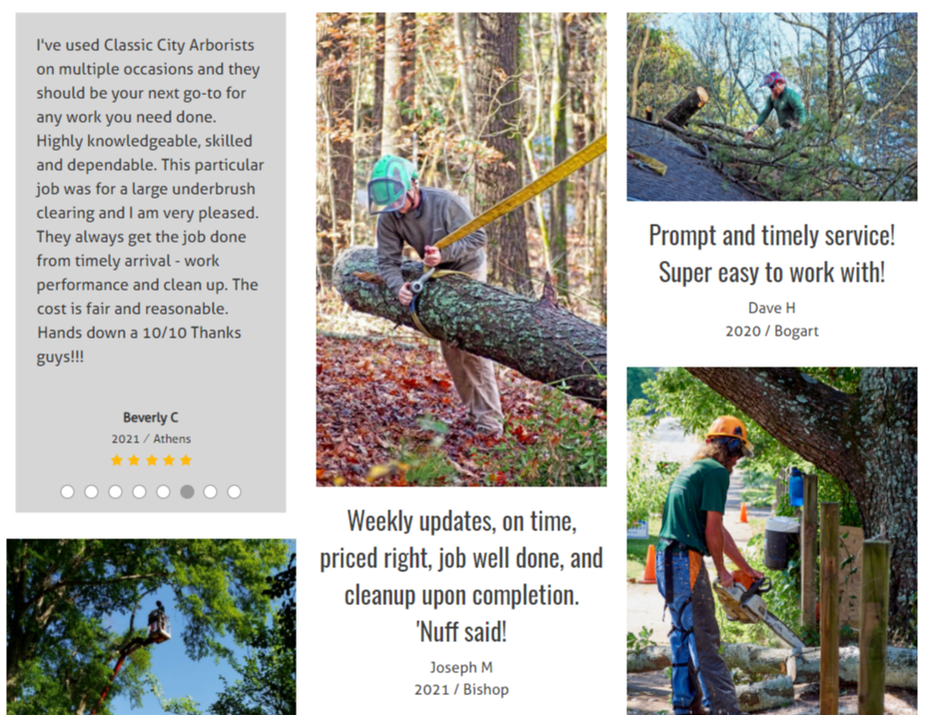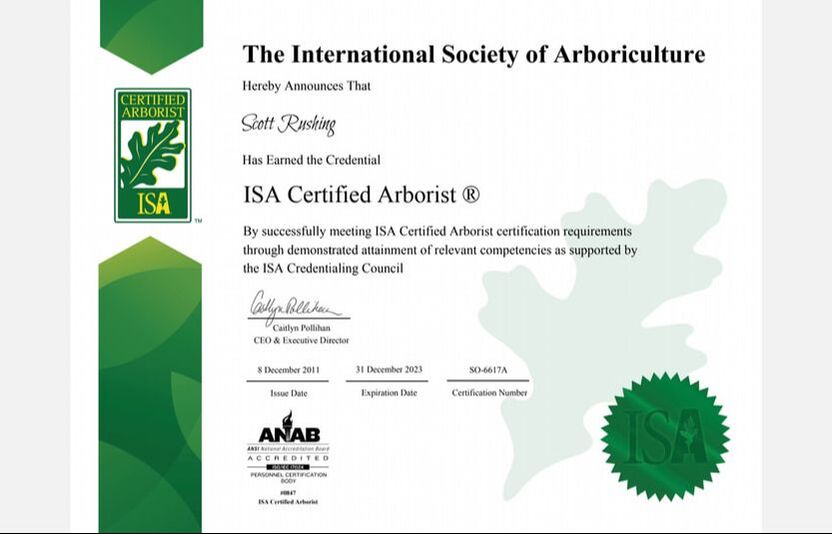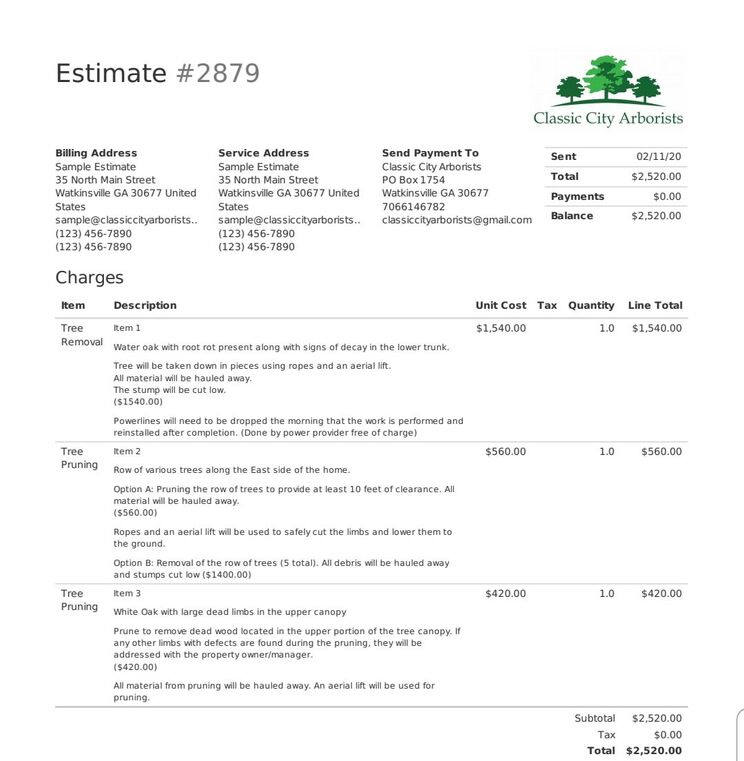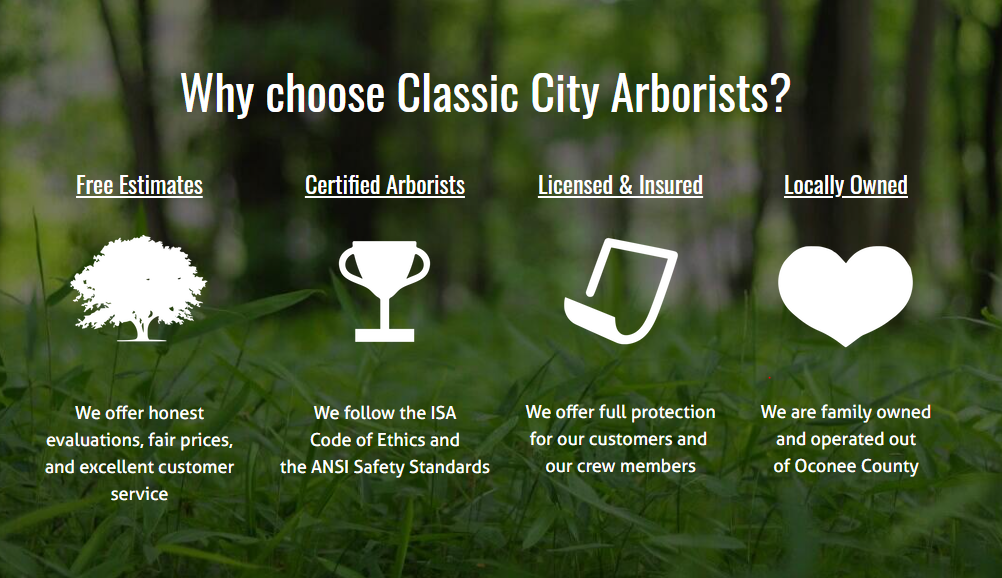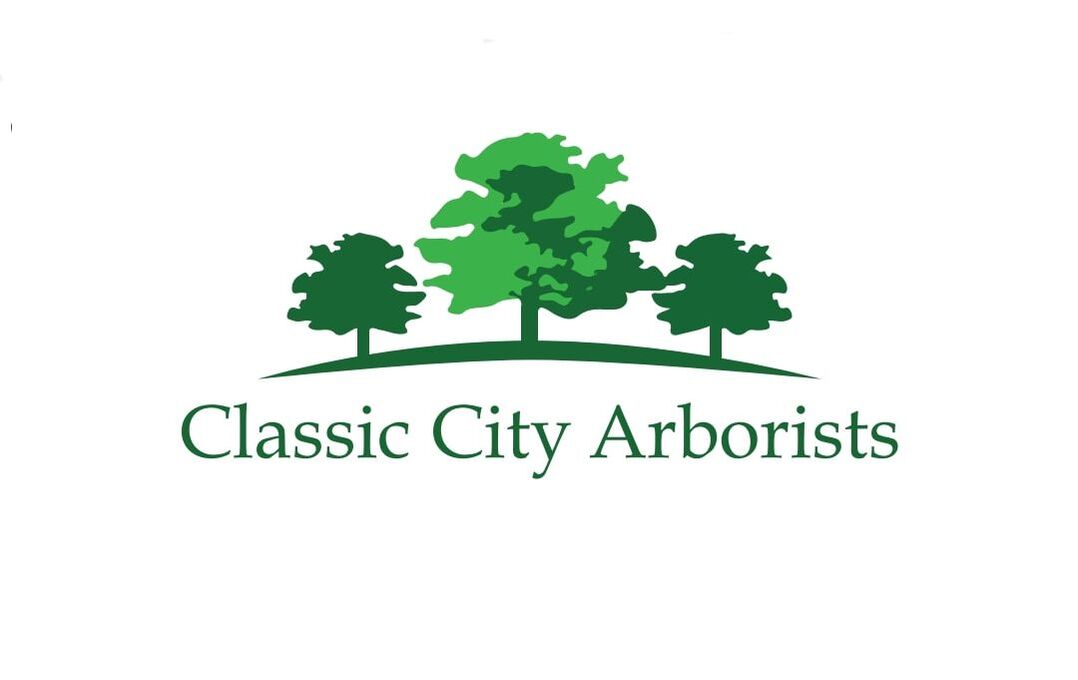|
News and Blog Articles
|
|
Two of the services Classic City Arborists is proud to offer can often be confusing: the free estimate service and our Tree Risk Assessments. Free estimates involve customers asking for our professional opinion on specific projects or individual trees; for more information, please see our Free Estimates article! Tree Risk Assessments (TRAs), on the other hand, are a lot more intensive, and are subsequently not a free service. During a TRA, a qualified arborist will evaluate all the trees on a given plot of land to assess their risk potential and then advise the owner or manager of the property of which trees may require immediate attention. But what does that mean?First of all, you have to be certified by the International Society of Arboriculture (ISA) with their Tree Risk Assessment Qualification (TRAQ) to perform a TRA; Scott Rushing proudly earned his TRAQ in January of 2019. His name is listed on the ISA’s Trees are Good website along with all other certified arborists. To qualify to take the TRAQ course, you have to meet certain requirements as an arborist, such as being an ISA-Certified Arborist or having a degree in arboriculture, forestry, or horticulture. Scott holds a Bachelor's in Agricultural Education from the University of Georgia and is an ISA-Certified Arborist. The TRAQ itself involves a two-day, instructor-lead educational course, followed by half a day of both written and field assessments. Once completed successfully, the certification is active for five years; TRAQ holders must take a renewal course, which involves an abbreviated version of both the original educational material and test. What is the TRAQ?
There are three different levels of intensity when it comes to Tree Risk Assessments. The first level is referred to as a limited-visual assessment, also sometimes referred to as drive-by assessments. This level of assessment is commonly employed in urban forest environments, but can be required anywhere a visual inspection is difficult to perform due to limited access. In a limited-visual assessment, the arborist will scan for obvious high-risk trees with immediate care needs. The second level of TRA is a basic assessment, which involves a 360-degree inspection of the tree(s) in question. It is more thorough thanks to greater access, and often involves the use of basic measurement and assessment tools, such as tape measures for diameter, binoculars for crown inspection, a mallet for detecting hollow trunks, and/or a probe for cavity evaluations. Lastly, the third level is referred to as an advanced assessment. This in-depth inspection can involve all of the previously-mentioned methods, as well as aerial evaluation, decay detection, health evaluation, wind load assessment, and static load assessment. These three processes were created to help property owners, property managers, and tree owners get the information they need to make educated decisions regarding the trees in their care, whether that decision is to trim back some limbs, let the tree grow normally, or cut the tree down entirely. Basically, this means that a TRAQ-holding arborist can accurately and efficiently follow the standardized, systematic process for assessing any tree’s potential risk, as defined by the International Society for Arboriculture. By adhering to the ISA’s guidelines, certified arborists ensure that each risk assessment is as accurate, consistent, and thorough as possible. Trees come with a myriad of social, economic, and environmental benefits. Whether they’re used as shade trees or planted specifically to strengthen the ground integrity of the area, trees are an invaluable resource to any urban or rural landscape. As the age and size of the tree increases, so do these benefits; however, so do the risks. Older, larger trees are more likely to shed branches, develop decay, incur pest infestations, and present a heightened fall risk due to damages they’ve collected over the years. Even younger trees can be predisposed to failure, or fall victim to inclement weather and other natural events. When performing a TRA, no matter its level, Scott keeps these benefits and risks in mind, aiming to weigh the two against each other and ensure customers are aware of when the risks outweigh the benefits, and vise versa. He will look at and document a variety of factors pertinent to the decision-making process, including structural condition, tree load, tree adaptation, relation to surrounding structures, and proximity to traffic and populated areas; he will use this information to evaluate a tree’s risk of failure, the degree of that failure, the consequences of that failure, and the potential surrounding targets that may be affected by that failure. After the evaluation, each tree will receive a risk category that can then be compared to the level of risk that you, as the property owner or manager, find acceptable. The four risk categories are Low, Moderate, High, and Hazard/Hazardous. Low and Moderate risk ratings are not usually recommended for full removal, while High and Hazardous are. Acceptable risk level may be determined by a homeowner’s association, or your town or county (or even state) standards. Along with evaluating and reporting a tree’s risk, a TRA involves noting the treatments and suggested actions associated with each tree to bring it within an acceptable level of risk. If a tree’s risk category exceeds the level or risk defined by the authoritative party, then Scott will recommend some kind of mitigation. This mitigation can include anything from just trimming back a few dead limbs all the way up to removing the entire tree. This means Scott will not only tell you which trees present a danger to you and your home, but will also tell you exactly how it can be fixed! Each mitigation option will be detailed out along with its respective cost. This way you can determine, not only which options are more pressing, but also which ones are within your budget. More information on free estimates and what this line-item evaluation will look like can be found here. At the end of the day, getting a Tree Risk Assessment from Classic City Arborists is one of the best ways to get you have all the information you need about all the trees in your care to ensure they are set to live long, happy, and healthy lives. If you’d like to schedule a Tree Risk Asessment, please click here! AuthorEmily Casuccio is sister and sister-in-law to Rebekah and Scott Rushing, and has over half a decade of experience in copywriting, copyediting, proofreading, and developmental storyboarding. She's worked with both published and undiscovered authors on both fiction and nonfiction, and takes pride in supporting local businesses. Her passion lies in the written word and helping authors of all capacities realize their dreams and achieve their fullest potential. To learn more about her, read samples of her work, or contact her, visit her online portfolio. Sources: ISA Tree Risk Assessment Qualification Community Tree Risk Assessment Tree Risk Assessment Methods: A Comparison of Three Common Evaluation Forms
0 Comments
At Classic City Arborists, when we say 'free estimate,' we mean a completely free estimate. No time limit, no maximum number of trees we’ll look at, and no hidden costs. To schedule an estimate, you can fill out the contact form on our website, shoot us an email, or give us a call. From there, you'll talk to Emily Casuccio (administrative assistant extraordinaire). She’ll get all the information we need, like the address of the property where you need work done, and then she’ll work with you to arrange a time for your estimate. Appointment times are given in 2-hour windows, like between 2pm and 4pm, or from 10am to 12pm. This gives us some wiggle room in case an appointment before yours runs long, or there's a delay on a job site. To make things easier for you, we offer to send out an email notification, text message, or even give you a call before we head your way, so you'll have 15 to 20 minutes' notice before we arrive. Inclement weather, job delays, and sometimes sick kids, can all impact our planned work load. We strive to keep our customers as up-to-date as possible, and we'll let you know as soon as we do if something happens to delay your appointment. All our estimates are performed by Scott Rushing, our co-owner and ISA Certified Arborist (and the 'best daddy ever' according to his daughter!). When Scott arrives, he'll look to you to show him what you're looking to have done. Some examples of work you might ask about includes things like “I need this tree removed so I can put a pool here,” or “this tree is too close to our house, and it drops nuts and twigs on our roof,” or “I think this tree is dead, and I don’t want it to fall on my fence.”
So, for example, say there's a tree you're concerned is dead, and you want it cut down, but Scott sees that it isn't dead at all. He'll give you an estimate for cutting it down, since that's what you asked for, but he'll also make sure you understand tree is fine, and doesn’t need to be removed unless you just want it to be. If you show him a tree that you want thinned out so the grass beneath it will grow, Scott will give you an estimate for that, but he’ll also point out that the tree behind the one you asked about is the one stealing all the sunlight, and if you want the grass to grow, that’s the one you need removed or thinned. This is one of the reasons we believe it’s extremely important that Scott is ISA-certified; not only can he do the work you want done, but he can tell you if it’s necessary or if there’s other work that needs to be done for you, your home, and your family to be safe. All throughout your appointment, Scott will be taking notes and creating your estimate as you go. By the time you’re done, he’ll have a rough cost for all the work you discussed. After Scott leaves, he’ll compile all the information into an itemized list of everything you asked to be done, with its associated cost, and email it to you; this allows you to look through your finished estimate and pick and choose what you’d like done out of everything the two of you discussed. Keeping in line with our policy of honesty and transparency, we always encourage customers to get more than one estimate on the work they want done. This helps you to get a real feel for the market cost of this kind of work, and allows you to meet other professionals in this field that might have different opinions, suggestions, and recommendations. We want you to get the work you need done, at the price you can afford – even if that’s not with us. We do, however, recommend that no matter what company you choose to work with, you find someone that is licensed and insured, preferably with automobile insurance, general liability insurance, and worker’s compensation coverage. These things will add some cost to your work, but they protect you from liability in the event of an accident. Whatever your decision, we’re honored that you chose us for an estimate, and appreciate your business no matter its capacity. Schedule your free estimate today! AuthorEmily Casuccio is sister and sister-in-law to Rebekah and Scott Rushing, and has over half a decade of experience in copywriting, copyediting, proofreading, and developmental storyboarding. She's worked with both published and undiscovered authors on both fiction and nonfiction, and takes pride in supporting local businesses. Her passion lies in the written word and helping authors of all capacities realize their dreams and achieve their fullest potential. To learn more about her, read samples of her work, or contact her, visit her online portfolio. Quercus phellos, otherwise known as the willow oak, is a deciduous tree of the red oak family, native to North America. Specifically, willow oaks are found in the eastern and central regions of the United States, from New York to southern Florida, and as far west as Texas, Oklahoma, and Missouri. Most commonly, naturally-occurring willow oaks are found along lowland floodplains or streams. You’ve probably seen them at the park, or growing along a sidewalk or other public walking path. These medium-sized trees typically reach heights of 65 to 100 feet with a trunk diameter between 4 and 5 feet, though some have been recorded growing as high as 128 feet with a trunk diameter of up to 6 feet. Despite their grand size, these oaks typically maintain a shallow, fibrous root zone, making them easy to transplant. Thanks to their value as shade trees, willow oaks are a popular choice to line sidewalks or public parks; when young, they have a pyramid-like shape that will fill out to a more round shape as they age. This visually pleasing balance of axial and radial dominance, in addition to its full crown and delicate leaves that contrast those of other oaks, makes willow oaks an attractive addition to any landscape. Willow oak leaves are tipped with a bristle-like hair, which characterizes them as oaks, but are otherwise visually dissimilar to other oak trees; instead of the highly recognizable lobed leaves, willow oak leaves are long and narrow, similar to those of willow trees. Subsequently, these trees are referred to as willow oaks, despite having no actual relation to willow trees (though they do share a similar manner of absorbing water!). During the spring, willow oak leaves are a bright, attractive green on top with a paler, muted green on the underside. This underside can sometimes be lined with downy hair, but the leaves are otherwise hairless. The distribution of the leaves creates a dappled shade effect; if you’ve ever sat beneath one, you know how relaxing it is to have enough light to see by without being hounded by the harsher of the sun’s rays. During the spring, willow oak leaves are a bright, attractive green on top with a paler, muted green on the underside. This underside can sometimes be lined with downy hair, but the leaves are otherwise hairless. The distribution of the leaves creates a dappled shade effect; if you’ve ever sat beneath one, you know how relaxing it is to have enough light to see by without being hounded by the harsher of the sun’s rays. In summer, the leaves darken to a warmer green, and in autumn, they can turn a stunning golden yellow or a rustic, burnt red before they fall, making them even more attractive as a landscape addition. Georgia is well-known for its beautiful fall landscapes, and willow oaks are no exception! The bark of the willow oak ranges from a muted brown to a soft grey color and is identified as chunky-scaly, referring to the irregular fissures that run along the trunk. As a kid, you probably tried to peel bark like this to see how long a piece you could get! With this color and pattern combination, willow oaks are considered attractive even when bare, making them visually pleasing even during the winter. The bark of the willow oak ranges from a muted brown to a soft grey color and is identified as chunky-scaly, referring to the irregular fissures that run along the trunk. As a kid, you probably tried to peel bark like this to see how long a piece you could get! With this color and pattern combination, willow oaks are considered attractive even when bare, making them visually pleasing even during the winter.
Though they require significant amounts of water when starting out, once established, these low-maintenance trees can be left to their own devices. They have a tendency to grow beyond expectation, which can lead to cracked sidewalks or pavement, and can also present a danger to your home should you build a house too close to one. When looking to move, build a new home, or plant a new tree, keep in mind the projected size to ensure your home and your family stay safe! In addition to their expansive size, willow oaks can present stark competition for sunlight, water, soil nutrients, and other resources. Their elevated water needs when young will often have them pirating water from other plants in the area, and their rapid growth rate means they can easily deplete surrounding soil of its nutrients as quickly as it can be replaced, leaving little to no nutrients for other flora in the area. If you have a lot of other trees and plants around, make sure your willow oak doesn’t steal all their resources! Earlier than most oak species, willow oaks will begin to grow acorns at just 15 years of age. These acorns are smaller than what you might imagine, measuring in as just half an inch long on average, and feature a shallow cap. Dropped acorns can easily accumulate, which can pose a nuisance on sidewalks, walking paths, or other public spaces. In addition, these acorns attract squirrels and other animals, which can be seen either as cute additions to the scenery or annoying interruptions, depending on the location and audience. Overall, when considering adding a willow oak to your yard or home landscape, keep in mind their growth rate and size, as well as their high water needs when young; where space permits, these trees are a grand addition, so long as they are left ample room to grow to their full potential, and are sufficiently supplied with water and nutrients to prevent negatively impacting the surrounding flora. AuthorEmily Casuccio is sister and sister-in-law to Rebekah and Scott Rushing, and has over half a decade of experience in copywriting, copyediting, proofreading, and developmental storyboarding. She's worked with both published and undiscovered authors on both fiction and nonfiction, and takes pride in supporting local businesses. Her passion lies in the written word and helping authors of all capacities realize their dreams and achieve their fullest potential. To learn more about her, read samples of her work, or contact her, visit her online portfolio. |
Categories
All
Archives
January 2023
|
|
23 Whatever you do, work at it with all your heart, as working for the Lord, not for human masters,
24 since you know that you will receive an inheritance from the Lord as a reward. It is the Lord Christ you are serving.
Colossians 3:23-24
24 since you know that you will receive an inheritance from the Lord as a reward. It is the Lord Christ you are serving.
Colossians 3:23-24
